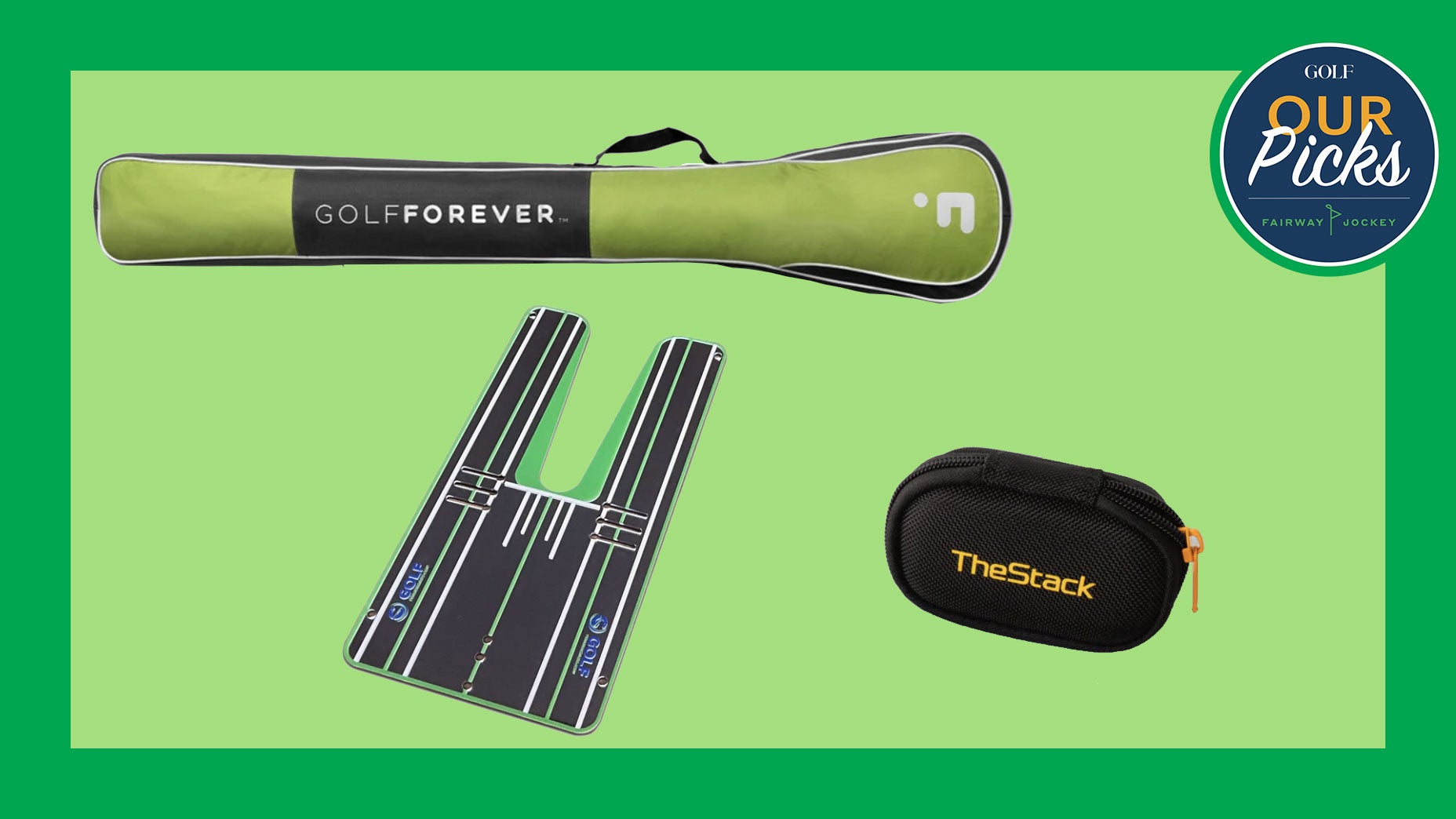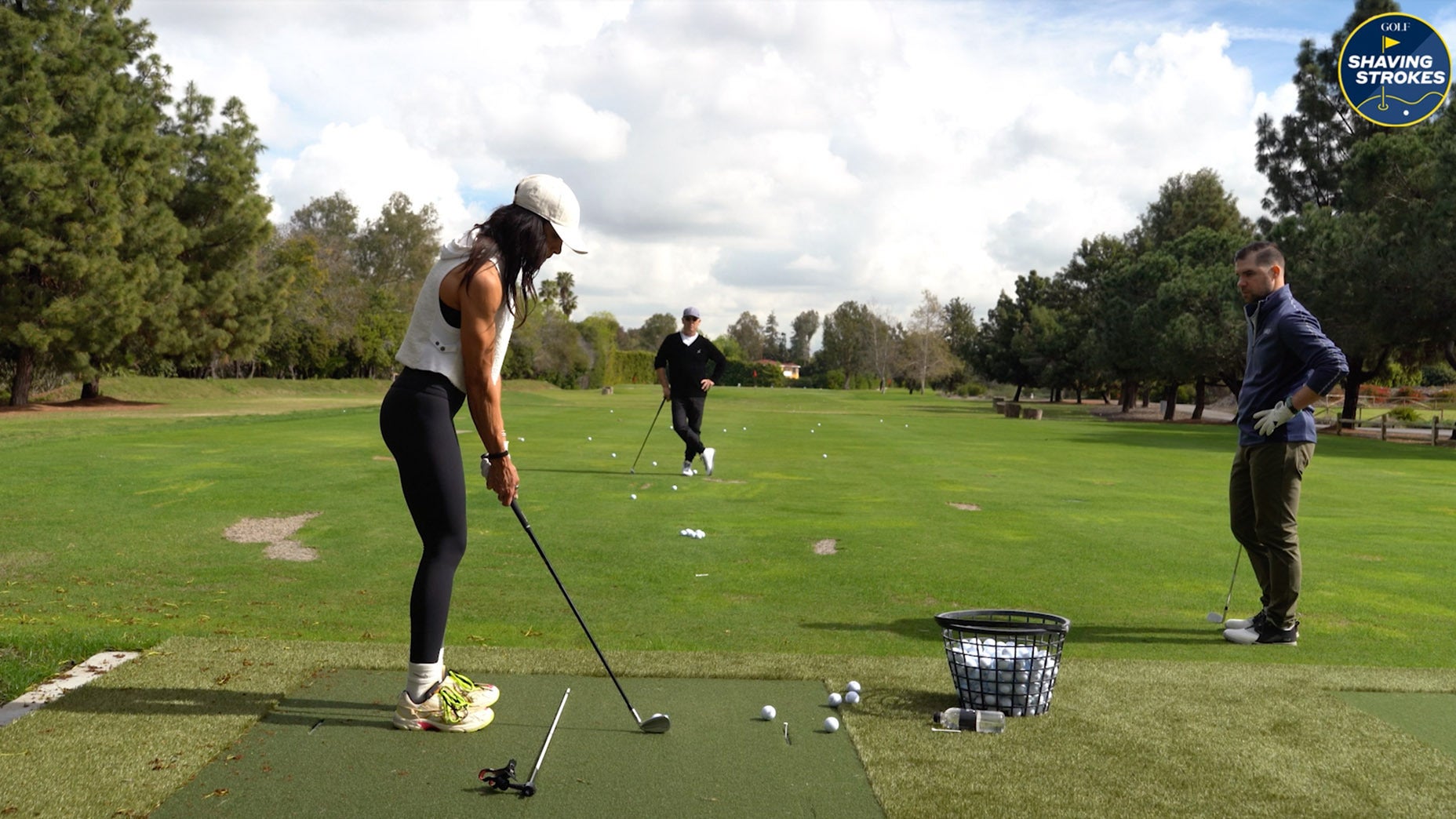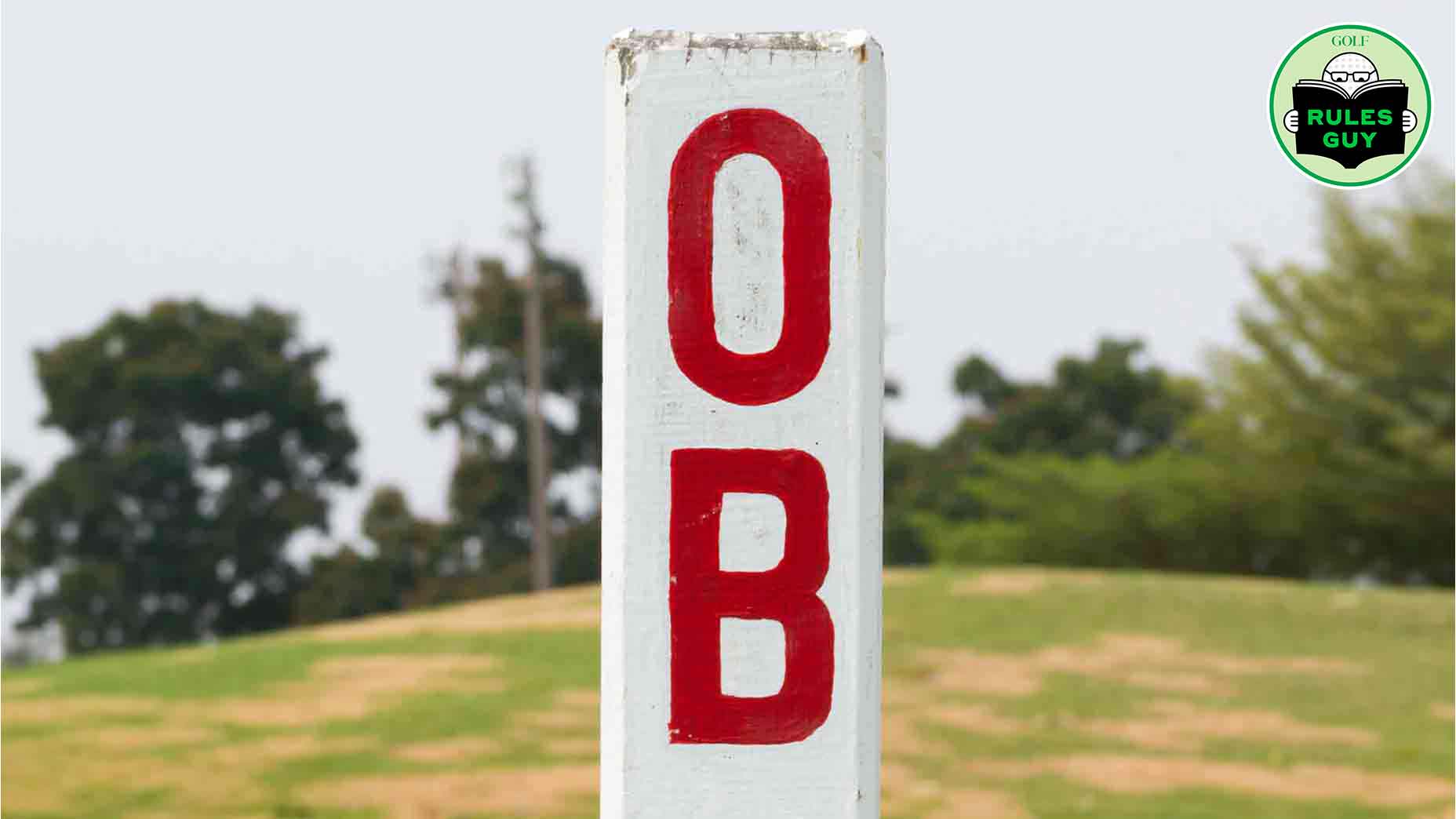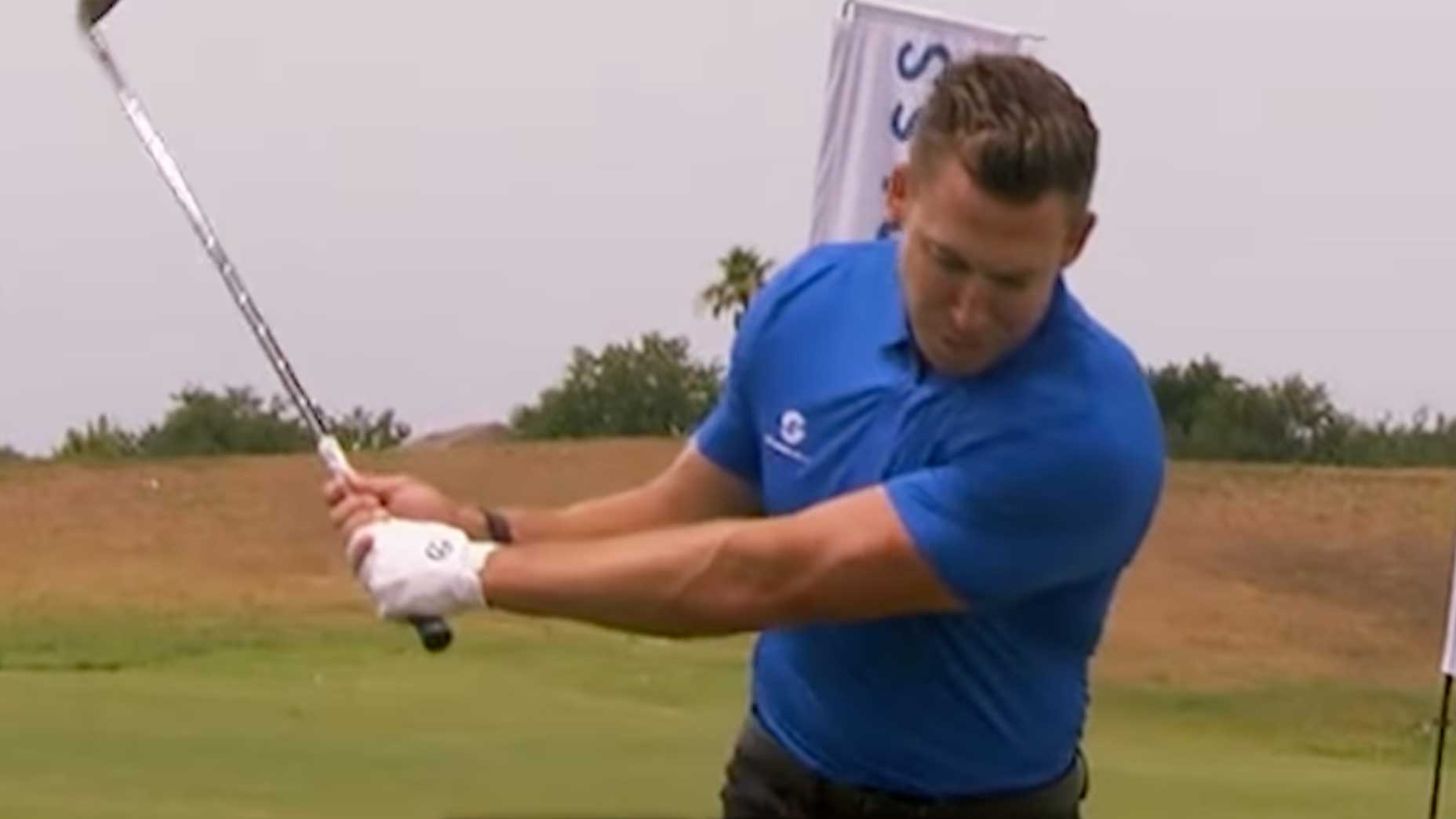Holding a golf club sounds like the simplest aspect of golf, but it’s not. And not just that: It might also be the most important. You’ll hear a lot of pros and teachers alike say that if your grip is poor, your stance and swing will follow suit. Discover below how to hold a golf club, step-by-step guides and troubleshooting tips that will create a solid foundation for a successful golf swing.
Holding a Golf Club for Beginners
You want to resist the urge to grab a golf club like a baseball bat and have at your golf ball. Though, that does sound kinda fun, you will not make much impact on the range.
Your golf grip is arguably the most important element of your entire swing. It creates a foundation for your golf swing, and it’s the only connection you have with your club — so treat it wisely! When it comes to learning how to hold a golf club, trial and error can often be the best way to find a grip that works for you.
Step-by-Step Guide to Holding a Golf Club
We’ll dive deeper into the three types of golf grips in the next section. Yet, before you start experimenting with how to hold a golf club, you’ll want to familiarize yourself with your club. No matter what grip you go with, these step-by-step instructions will help you create a solid base for your grip.
(Note: these instructions are for right-handed golfers; see below: left-handed vs right-handed golf clubs.)
- Hold your club waist-high in front of you, horizontal to the ground, and square the club face.
- Always grab the club with your left hand first. Stretch out the fingers of your left hand; align the club handle with your left palm so it makes a straight line diagonally across your fingers.
- Close your hand around the club.As you grip the club with your left hand, the heel of your palm should rest along the top edge of the handle (but you should still be able to see the tip of the handle).
- Rotate your hand to the right until you see two knuckles on your left hand when you look down. This will give you a neutral grip, which is a great starting point for lots of golfers.
- Position the heel of your right hand on top of your left thumb, so it’s covering. left hand. Close your hand so your thumb and forefinger create a ‘V’ that points to the middle of your sternum.
Types of Golf Grips
There are three basic types of golf grips: the overlapping, interlocking and 10-finger grips. Of course, there’s no one-size-fits-all grip when learning how to hold a golf club, but it helps to know the differences.
10-Finger Grip
It’s called the “10-finger grip” because every one of your fingers is on the club. Not many professionals use this grip, but some newcomers to the game find it comfortable.
It can be a powerful grip because each of your fingers are touching the surface off the grip, and can be a well-suited grip for a golfer with small hands.
Overlapping Grip
The overlapping or “vardon” grip is one of the most common in golf. This is when you positioning the pinkie finger of one hand and placing it in the ridge between your other hand’s index and middle finger.
This grip’s biggest advantage is beneficial for anyone with particularly large hands.
Interlocking Grip
The interlocking grip starts with the 10-finger grip; you simply interlock one hand’s pinkie finger with the other hand’s index finger to get your hands closer together.
The biggest advantage is that this ‘locks’ your fingers together so both of your hands work together, which can give your golf swing some added power.
Differences in Holding a Driver Vs a Putter
There are six basic types of golf clubs: putters, drivers, fairway woods, irons, hybrids and wedges. Of course, you don’t want to hold your driver (which is best used off the tee) the same way you’d hold your putter (which you use on the green).
Holding a Driver
When learning how to hold a golf club, start by holding the club at the base of the handle with your left hand and rotating your hand so you can see the knuckles of your index and middle finger, as described above.
Place your left hand on the club, then place your right hand on the club so your right hand is overlapping the ring and middle fingers of your left hand. After you place your right hand on the club, make sure your right thumb and index finger creates a “V” so it lines up with the middle of your torso.
(If you’re left-handed, the hand placement will be the opposite; see: ‘Left-Handed Vs Right-Handed Golf Clubs.)
Holding a Putter
Begin by holding the putter up to your outstretched left hand. The handle should run through the center of your hand. Use the same placement for your right hand, so it sets below your left hand.
There are many ways to hold a putter — far more than the regular golf swing. You’ll see many variations on the course. You’ll see overlap, claw and cross-handed grips. Try out a few variations and choose the most comfortable grip for you.
(Again, if you’re left-handed, the hand placement will be the opposite; see: ‘Left-Handed Vs Right-Handed Golf Clubs.)
Left-Handed Vs Right-Handed Golf Clubs
If you’re left-handed, you’re probably used to living in a world built for right-handed people. Luckily, this isn’t the case in golf. Golf club manufacturers make left-handed clubs for people just like you. To determine if you’re more comfortable swinging left-or-right-handed, you might want to try out a few clubs. Some lefties, like Phil Mickelson, find they prefer to swing right-handed, because it allows their stronger arm to pull the club down towards the ball.
There’s no right or wrong way, do what feels natural and comfortable.
The golf grip is the same technique for lefties as it is for right-handed golfers, but the hand-placement is opposite. Your right hand will be at the edge of the handle, while your left hand will be closer to the head.
Troubleshooting Your Golf Grip
Does your golf grip feel uncomfortable? Are your swing and your stance a little off? You’re not alone. Your ‘mistakes’ aren’t breaking the mold when it comes to learning how to hold a golf club.
Check your grip and make sure to avoid common mistakes.
- Avoid Gripping “Up”
It’s important to position your golf club appropriately on the club. If you can’t see the tip of the handle, your hand is positioned too high on the club. Move your left hand down the handle a bit so you can see the handle and reposition your right hand to match.
- Check Your Trail (Right) Hand
If you’re right-handed, double-check your right hand placement on the club. Are your thumb and forefinger making a ‘V’ shape? And is it pointing to the middle of your sternum?
- Check Your Lead (Left) Hand
Can you see the knuckles of your ring and middle fingers on your left hand? Is the club handle running diagonally down your fingers?
- Don’t Squeeze Too Hard
You don’t want to choke your club to death. As Sam Snead once said, you should be holding the golf club with the same pressure you would hold a small bird: tight enough so it doesn’t fly away, but soft enough so you don’t crush it. While you don’t want your hands to shift, you still want a little ‘give’ when it comes to your grip.
- Get Back to Basics
If all else fails, sometimes it’s best to start over. Put the club down and step away. Sip an Arnold Palmer and relax. Then, return to your club and start from the beginning.
Golf Grip Cheat Sheet: TLDR
Want to learn how to hold a golf club without all the wordy descriptions? Get down to the bottom of your grip by following these simple ‘rules.’
- Always start with your left hand if you’re right-handed (vice versa if your left-handed
- Make sure the handle runs diagonally across your left fingers
- Check for knuckles after you close your hand over the handle
- Don’t cover the butt of the handle with your palm
- Your right hand’s thumb and forefinger should make the shape of a ‘V’ on the handle\
- Experiment with the three basic grips until you find one that’s comfortable
- Stay loose and don’t squeeze the club too tight
When all else fails, go back to the basics. Rome wasn’t built in a day, and Tom Watson certainly didn’t learn to play golf in one either.
Frequently Asked Questions
What is the proper way to hold a golf club?
Everybody is different, and many teachers will tell you that there is no correct way to hold a golf club. But a good starter grip for a new, right-handed golfer is to rest the grip so it runs diagonally down the fingers into the palm on your left hand, which should go at the top of the club. You should be able to see the knuckles of your index and middle fingers when you look down at the club. The palm of your right hand should then sit over the thumb of your left hand towards the bottom part of the grip.
How do you hold a golf club with your right hand?
Many golfers’ right hand sits so the palm is near the side of the grip, facing the target. The palm of your right hand should rest on top of the thumb of your left hand. The ‘v’ formed by your thumb and index finger should point to your right ear.
How do you hold a golf club with your left hand?
The grip of the golf club should sit diagonally across your fingers into the palm of your left hand. When you close your left hand, you should be able to see the knuckles of your left index and middle fingers.
How do you place your hands on a golf club?
In simplest terms, you should have your ‘lead’ hand on the top of the golf club and your trail hand just underneath it. The grip should run down your fingers and palm in your lead hand, and the palm of your trail hand should sit just on top of it.
How far down should you grip a golf club?
Golfers should group the club at the top of the golf club, but always ensuring that no part of their hand is hanging off the edge of the club.
Why do golfers interlock their fingers?
Many of golfers choose to interlock their fingers because they feel it helps them work together as one, which increases their power.
How far should you choke down on a golf club?
For a low-flighted knockdown shot, you needn’t choke down more than a few inches. For a delicate chip shot, you can stand slightly closer to the ball and grip near the bottom of the grip.
What does choke down mean?
Choking down in golf means to grip further down the shaft, towards the bottom of the grip. It effectively makes the club shorter, which makes it easier to control and can reduce the distance it travels.
How do you hold a putter?
There are many ways to hold your putter. The most common way is the “reverse overlap”; your left hand should sit above your right hand, with both thumbs running down the center of the grip. The index finger of your left hand should link the two hands by resting slightly over your right index and ring finger.







